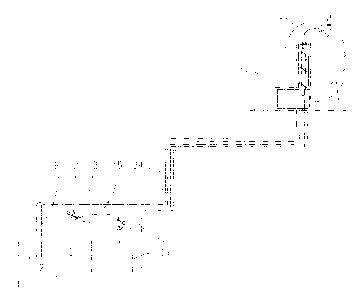Some of the information on this Web page has been provided by external sources. The Government of Canada is not responsible for the accuracy, reliability or currency of the information supplied by external sources. Users wishing to rely upon this information should consult directly with the source of the information. Content provided by external sources is not subject to official languages, privacy and accessibility requirements.
Any discrepancies in the text and image of the Claims and Abstract are due to differing posting times. Text of the Claims and Abstract are posted:
| (12) Patent Application: | (11) CA 2482264 |
|---|---|
| (54) English Title: | METHOD AND APPARATUS FOR CHILLING DRAUGHT BEVERAGES |
| (54) French Title: | METHODE ET DISPOSITIF DE REFRIGERATION DES BOISSONS A LA PRESSION |
| Status: | Deemed Abandoned and Beyond the Period of Reinstatement - Pending Response to Notice of Disregarded Communication |
| (51) International Patent Classification (IPC): |
|
|---|---|
| (72) Inventors : |
|
| (73) Owners : |
|
| (71) Applicants : |
|
| (74) Agent: | DIMOCK STRATTON LLP |
| (74) Associate agent: | |
| (45) Issued: | |
| (22) Filed Date: | 2004-09-23 |
| (41) Open to Public Inspection: | 2006-03-23 |
| Availability of licence: | N/A |
| Dedicated to the Public: | N/A |
| (25) Language of filing: | English |
| Patent Cooperation Treaty (PCT): | No |
|---|
| (30) Application Priority Data: | None |
|---|
The invention described as a booster, provides for a means to chill a draught
beverage at
a point between its storage container and dispensing faucet. The Booster is
comprised of
an enclosed tank, which contains a heat exchange mechanism and a beverage
storage
reservoir. Two cooling liquid lines are attached to the Booster. One of these
cooling
liquid lines provides for the flow of cooling liquid into the Booster while
the other
cooling liquid line provides for the flow of cooling liquid from the Booster.
The cooling
liquid enters the Booster and flows over the beverage storage reservoir prior
to flowing
over and into the heat exchange mechanism. The cooling liquid exits directly
from the
heat exchange mechanism to an internal line that is connected to an exit port
of the
Booster. Two beverage lines are also attached to the Booster. One beverage
line brings
the beverage into the Booster while the other allows for the beverage to exit
from the
Booster. The beverage, upon entering the Booster, flows directly into the heat
exchange
mechanism whereupon the cooling liquid chills it. The beverage flows from the
heat
exchange mechanism into the beverage storage reservoir where it is further
chilled and
maintained at the desired temperature.
Note: Claims are shown in the official language in which they were submitted.
Note: Descriptions are shown in the official language in which they were submitted.

2024-08-01:As part of the Next Generation Patents (NGP) transition, the Canadian Patents Database (CPD) now contains a more detailed Event History, which replicates the Event Log of our new back-office solution.
Please note that "Inactive:" events refers to events no longer in use in our new back-office solution.
For a clearer understanding of the status of the application/patent presented on this page, the site Disclaimer , as well as the definitions for Patent , Event History , Maintenance Fee and Payment History should be consulted.
| Description | Date |
|---|---|
| Application Not Reinstated by Deadline | 2006-12-27 |
| Inactive: Dead - No reply to Office letter | 2006-12-27 |
| Deemed Abandoned - Failure to Respond to Maintenance Fee Notice | 2006-09-25 |
| Application Published (Open to Public Inspection) | 2006-03-23 |
| Inactive: Cover page published | 2006-03-22 |
| Inactive: Status info is complete as of Log entry date | 2006-02-15 |
| Inactive: Abandoned - No reply to Office letter | 2005-12-28 |
| Inactive: First IPC assigned | 2004-12-22 |
| Inactive: Courtesy letter - Evidence | 2004-11-16 |
| Application Received - Regular National | 2004-11-10 |
| Filing Requirements Determined Compliant | 2004-11-10 |
| Inactive: Filing certificate - No RFE (English) | 2004-11-10 |
| Abandonment Date | Reason | Reinstatement Date |
|---|---|---|
| 2006-09-25 |
| Fee Type | Anniversary Year | Due Date | Paid Date |
|---|---|---|---|
| Application fee - small | 2004-09-23 |
Note: Records showing the ownership history in alphabetical order.
| Current Owners on Record |
|---|
| ICEFLOE TECHNOLOGIES INC. |
| Past Owners on Record |
|---|
| MARKUS HESS |
| PHIL CARTER |
| SAM CHIUSOLO |